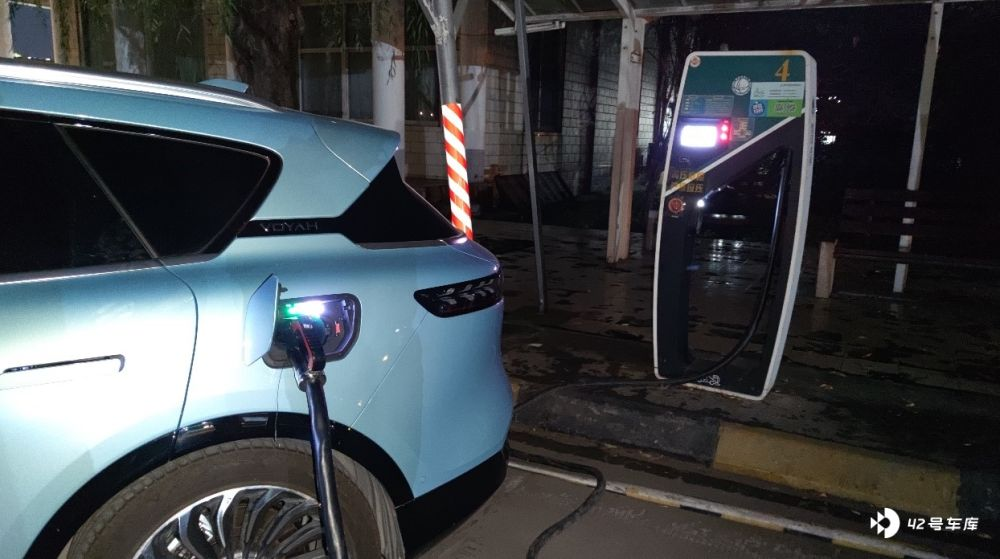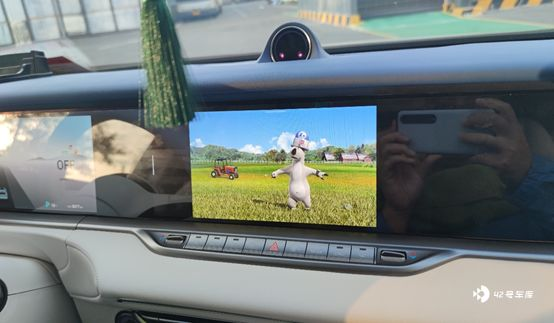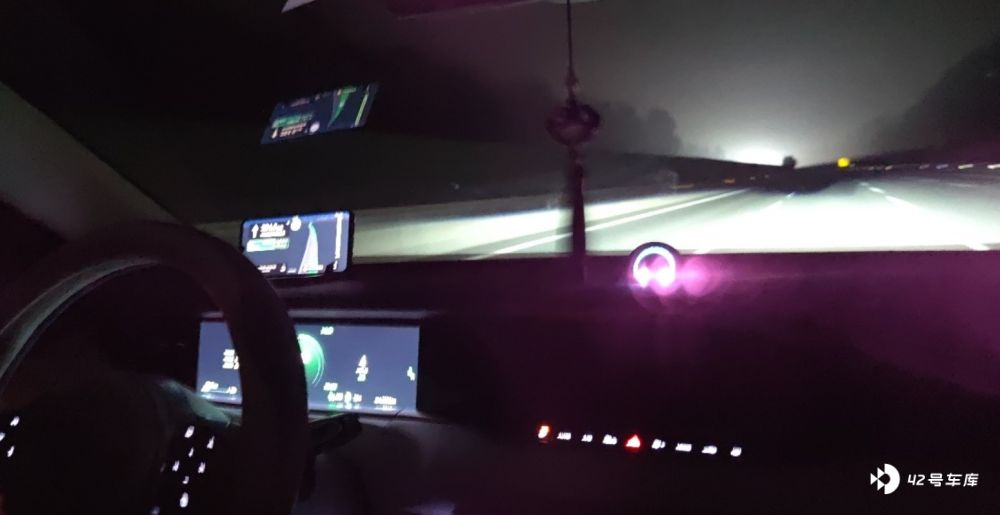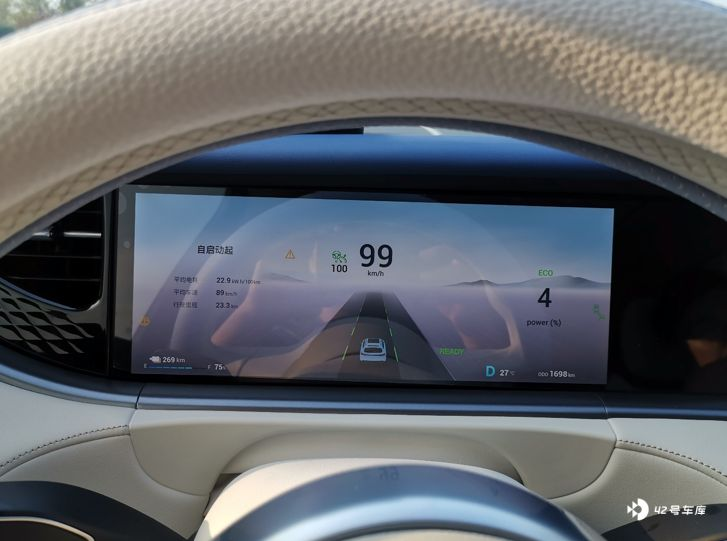I suddenly felt like writing a post, which was actually prompted by my recent experience of driving the Voyah FREE EV back home during the National Day holiday. After all, my new car has been running smoothly for over a month. I thought it was time to let my family give it a try and experience the performance of this long-range electric vehicle on a 2100 km one-way trip from Wuhan to Changchun. To be honest, I still feel a bit reluctant to part with my car after this long journey. Although the trip was quite long, the whole experience was amazing and made me, a person who usually feels scared driving on long-distance highways, fall in love with long-distance road trips. I even started to fantasize about the follow-up self-driving tour of the Sichuan-Tibet highway.
Before the departure, I prepared some dry food (Red Bull, coffee, Nongfu Spring, fruits, and jelly [facepalm]) and filled up the glass cleaner and battery. I also brought two boxes of Mao Pu, a specialty food from Wuhan. As the total distance was over 2000 km, I had to plan the route carefully. I decided to take the routes with more charging stations, namely Jinggang’ao and Jingha Expressway.
In recent days, there have been a lot of news reports about electric cars running out of power on long-distance trips during the holiday period, and some drivers even had to wait for four or five hours in the service area to recharge their cars, which led to a fierce competition for charging stations. As a person who has driven an electric car for over 2000 km on this trip, I think there are some valuable practical tips worth sharing with everyone, which I have summarized based on my driving experience with the Voyah FREE EV:
- The Gaode Maps app is user-friendly, and it can clearly indicate the type, number, and real-time availability of the charging stations, including fast and slow charging stations. Besides, on the highway, I only met XiaoPeng-branded chargers once; all other charging stations were operated by the State Grid.
- The charging stations operated by the State Grid may have different models with different charging speeds, such as 90A, 115A, 160A and 220A, and the charging power generally increases with time.
- Charging the Voyah FREE EV up to 80% can achieve the fastest charging efficiency. After exceeding this threshold, the charging rate decreases to about 90% due to battery protection. The BYD EV I met on the road had the same charging strategy.
- The higher the vehicle speed, the greater the wind resistance, and the higher the power consumption. The power consumption of driving at 90-100 km/h speed range is within 23 kWh/100 km; while driving at 120 km/h requires around 26-27 kWh/100 km. I charged my car every 220 km or so and stopped charging when the battery was charged up to 80%. If I encountered old charging stations, I switched to another service area to find a newer one.
- The design and installation location of the charging stations are generally consistent in each province. For example, charging stations in Henan are usually located near gas stations or at the back of the service area, while those in Hebei are near maintenance stations or in the upper right corner of the service area. If you are not sure about the location of a charging station, ask locals or the staff at the service area for help.
- Choose a charging station near the highway exit when getting off the highway to charge, so as to avoid wasting time in the traffic jam during entering the city.
- Choose highways with more lanes, such as G4 and G1, so that even if there is an accident or road repair, the road will not be completely blocked.
- Avoid driving during the first and last day of the free holiday period to avoid the holiday travel rush, which can cause serious traffic congestion.

Advantages of Voyah FREE
The best function of driving on the highway is the driving assistance, which can basically free your feet. You just need to pay attention to the road conditions. The car can actively accelerate or decelerate. If the road markings are unclear or the car is pressing on the lines, it will be reminded to improve driving safety. Especially when driving at night, the advantage of driving assistance is more obvious.
The seat can be adjusted in multiple directions, making it easy to find a comfortable position. The hardness, elasticity, and support of the cushion and backrest are very good. Friends who have ridden in a mini or NIO and other cars on the highway say that they are easy to get tired and sore (probably because the length of the thigh support is not enough), but there is no such issue sitting in the Voyah FREE. In addition, the seat can be ventilated when it gets hot, avoiding sweat on the back, and can be massaged when tired, which is the greatest enjoyment of long-distance driving!
The actual displayed mileage of the car is accurate. The total mileage, remaining mileage, and mileage already driven by Gaode can correspond to each other. Sometimes, when the road conditions are good, there can be some extra mileage, which is nice. You can charge the car at the planned charging location without worry.
The chassis is sturdy and the power is strong, which everyone knows very well. There is no pressure on the sharp turns on the highway, and the overtaking process gives you full confidence. The problem is that it is very easy to exceed the speed limit.
The three-screen configuration is very luxurious and practical. The three large screens each have their own functions and can also interact with each other. Especially the entertainment functions built into the large screen on the copilot side can satisfy the preferences of wives and children, and it is completely okay to play some soap operas or animated movies. By the way, the car’s internet traffic is also free for life, so you don’t have to worry about it. You can watch TV series comfortably while charging outside!

The night vision system is very good when driving at night on the highway. Because there are no street lights at night on the highway, turning on the high beams can easily cause light pollution. The night vision system greatly enhances the sense of safety at this time, which must be praised for Voyah.

The sound insulation is really good and it completely exceeds the level of the 300,000 yuan car. Sitting in the back seat, family members can take a nap in the car and say that it’s much better than the car at home.The last point is very cost-effective. As one of the first car owners, I have the lifelong free charging privilege, so I hardly spend any money on charging throughout the journey. If I had driven a gasoline car back home before, I would have spent thousands of dollars on fuel alone, not to mention the maintenance cost. Moreover, the cooperation charging pile coverage of Voyah is very high, basically in partnership with some big brands, such as State Grid, Teld, Star Charge and so on, you can easily find them using APP search. Regarding the energy supplement, Voyah has done a pretty good job. It is said that if you buy Voyah now, you can enjoy a one-year free charging privilege. I can run up to 3,200 kilometers per month with 800-degree power, fully meeting my daily travel needs. It can save several thousand dollars compared to the gasoline car in a month. Awesome!
Areas for improvement:
There are few applications on the car machine and cannot be selected by yourself, possibly due to the limitations of vehicle safety and operational capacity. If the car machine can provide a software store for proper selection, and prompt a warning when the memory exceeds the safety threshold would be better.
Baidu Maps on the car machine did not have the charging prompt for electric vehicles, while Gaode did a great job, as mentioned above.
The APP charging map needs to be refined and updated. In Changchun, there are exclusive charging piles that cannot be used, therefore, they should not be displayed on the charging map. For individual maps, the charging piles (e.g. Teld) cannot be used by scanning the code.
This article is a translation by ChatGPT of a Chinese report from 42HOW. If you have any questions about it, please email bd@42how.com.
